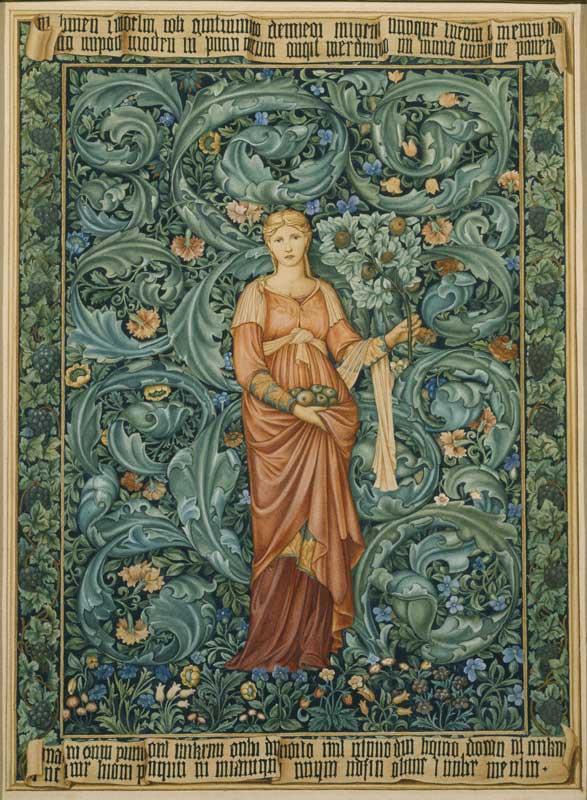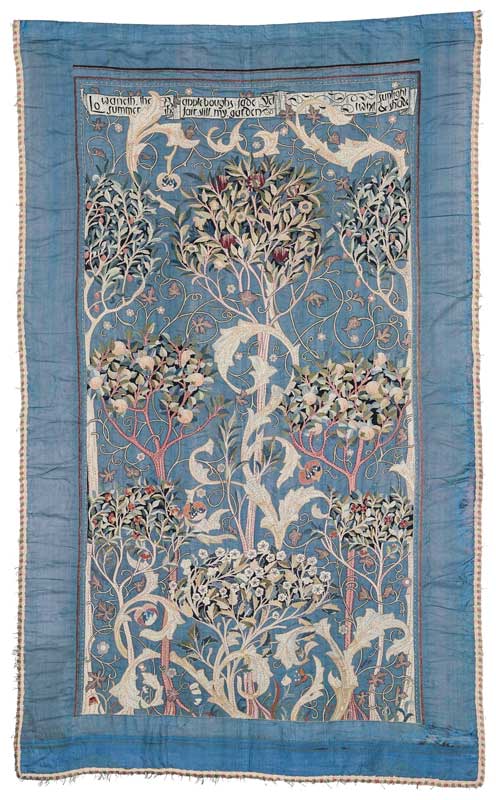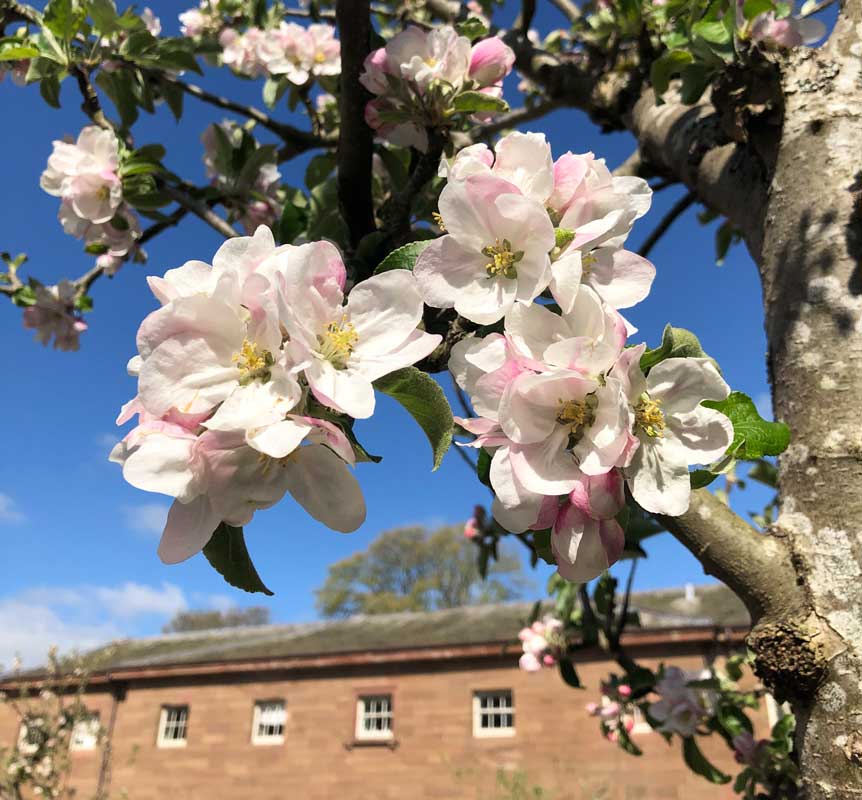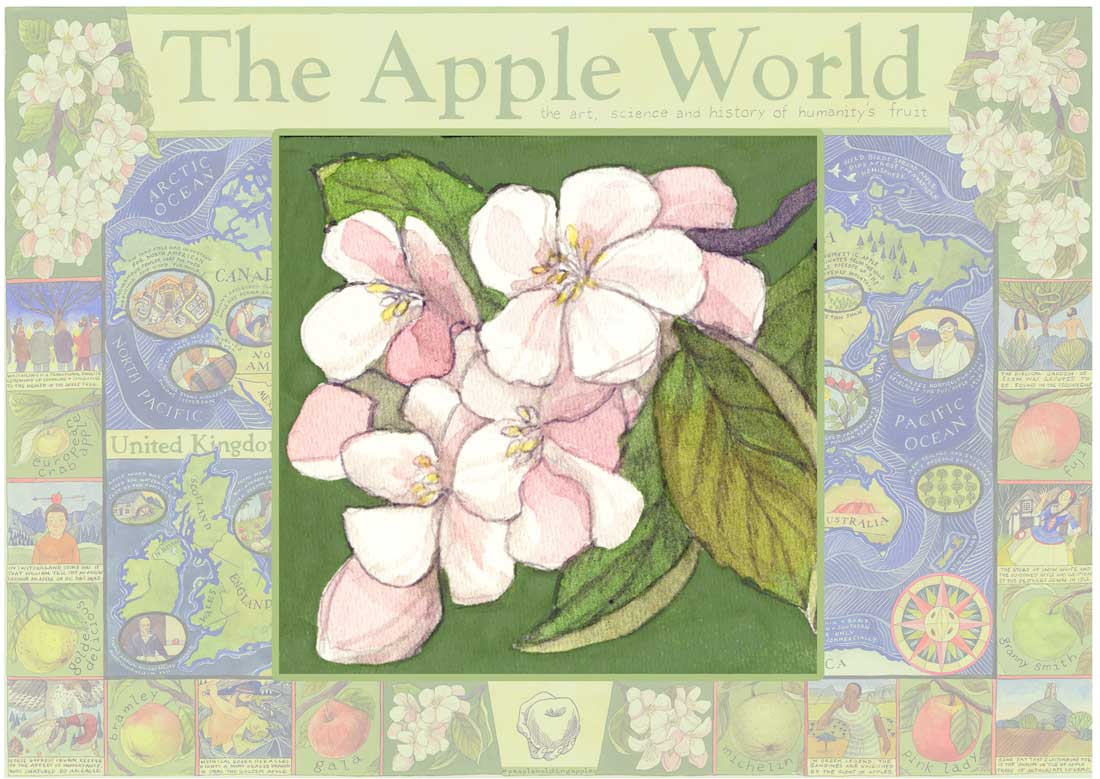Apple Blossom
The arrival of apple blossom has inspired artists, writers and composers to reflect on this symbol of regeneration and the passing of time.
For artists and writers apple blossom not only signifies the arrival of spring, regeneration and the wonder of nature, but also a state of innocence, youth and the transitory nature of time.
“The first blossom was the best blossom
For the child who never had seen an orchard”Louis MacNeice,
‘Apple Blossom’ (1957-60)
The opening verse of Louis MacNeice’s poem ‘Apple Blossom’ takes us back to the first time a child sees an orchard in bloom. In this innocent state we re-imagine our first encounter in an apple orchard heady with the sweet smell of blossom, accompanied by the hum of bees busily pollinating the flowers which will become the autumn apple crop. In that moment we recognise the regeneration of nature held suspended before the flowers are caught by the breeze and dispersed.
Such a moment was breathtakingly captured by the Pre-Raphaelite artist John Everett Millais in his painting, ‘Spring (Apple Blossoms)’. Begun in 1856, Millais would take four years to complete this largescale work painting outdoors in various orchards. This truthful observation of nature was particularly advocated by the Pre-Raphaelites, who under John Ruskin’s guidance were encouraged to go to nature ‘rejecting nothing, selecting nothing, and scorning nothing’. Millais’ painterly truth to nature was recalled by his wife Effie, the model for the young woman featured kneeling in the painting,
“in broad sunlight, the bees used often to settle on the bunches of blossom, thinking them real flowers from which they might make their honey”
Effie Millais
In the painting Millais extends the life cycle of the orchard to the youthful figures in the foreground. Youth itself has been suspended for a moment amongst the blossom. However, the girls are all on the cusp of adulthood something hinted at in their various poses and actions – thinker, listener, carer, dreamer, provider – their future roles possibly emerging. More troubling is the reclining figure who meets our gaze, assertive yet vulnerable, a scythe hanging ominously over her head. The scythe symbolically links the harvest to time passing and our own mortality.
Apple blossom continues to drift, forming new nature cycles in the Arts & Crafts Movement. William Morris’ Red House was built so close to its orchard that ripe apples were said to fall inside through open windows on hot autumn nights. Indeed the organic patterns of nature began to free form in the decoration of their houses – Morris’ apple wallpaper for example was designed in 1877. Pomona, the Roman Goddess of the orchard, was woven (after the original design by Edward Burne-Jones) with a motto of constant renewal, an unbroken branch between ancient blossom, hope and bough,
“I am the ancient apple-queen
As once I was so am I now
For evermore as a hope unseen
Between the blossom and the bough.”
Apple blossom again ushers in the seasons with all their light and shade in the creative embroidery partnership of May Morris (designer) and Theodosia Middlemore (embroiderer). In their beautifully free embroidered orchard, thread winds its way through the seasons as blossom gives way to ripening apples and a prosperous harvest,
“Lo waneth the Summer the apple boughs fade
Yet fair still my garden twixt sunlight and shade.”
And as a symbol of regeneration, apple blossom’s arrival is particularly poignant in S. F. B. Lane’s poem The Apple Tree, written after a bombing raid in the London Blitz of 1941. Surrounded by the ruins of a street, a lone apple tree survives ‘with all the bloom of spring’,
The Apple Tree London, 1941
You stood amid the ruins of a street,
Set in a garden where no bounds remained,
An apple tree with branches all arrayed
In blossom that proclaimed the breath of Spring.
But far about you, in the shapeless waste,
The bricks and dust and timber heaped and spread;
The gaping rooms where walls had fallen away,
The sagging floor, the rafters dropped awry,
And scattered ruin where there once had been
The homes of kindly, long-enduring men.
Within a meagre garden you had grown,
With stark, unlovely houses in close line
Where railway, gas works, factory hemmed you in.
You stood there when the rending hand of War
Tore down the houses and upon you hurled
The murd’rous debris and the shards of steel,
But now the surge of life has healed again
And hid your wounds beneath a veil of green.
From either wilderness of peace or war
Your beauty chides us, bidding us again
To build more worthily where you may reign,
An apple tree with all the bloom of Spring.
S. F. B. Lane
This regeneration of apple blossom each year also marks the regeneration of a whole habitat of wildlife which apple trees and orchards help to support. From pollinating insects to small mammals who take advantage of fallen apples and dead wood, the apple tree and its blossom support an abundance of life. From the young women picnicking in Millais’ orchard to the lone apple tree flowering in a post-Blitz wasteland – apple blossom signifies the passage of time and the cycle of the seasons, and with these a sense of both hope and renewal.
Music and score copyright © Luke Faulkner 2021 commissioned by Apples & People
Spring Rhapsody by Luke Faulkner
Luke composed and played ‘Spring Rhapsody’ and took as its inspiration Millais’ painting ‘Spring (Apple Blossoms)’.
‘I was initially struck by the intricate and rich texture of the hanging blossoms, leaves, and branches, and imagined how the sunlight might trickle through. This idea led to the interlocking of hands in the opening textures as the music hovers over an un-anchored bass line. Beyond this, the figures with their long romantic hair and aspect led to the music following an old-worldly style and Romantic-Classical form with long arching melodies.’
‘The short composition may be roughly divided into three parts: the first is an exposition of the musical ideas, the second comprises sequential treatment of these melodies and themes before meandering harmonically back into the original key, and the final part is a recapitulation of the opening ideas before taking a different turn that leads to an ending. This ending is the first time the main theme is properly grounded by a root position “tonic” harmony which finally resolves the suspended feeling of the opening material.’
This music has been dedicated to the memory of Gillian Bulmer (1935-2021) who was a long-serving trustee of the Museum of Cider and generous benefactor. Gillian was passionate about orchards.
Read more about Luke Faulkner
Born in Shropshire in 1991, Luke studied piano and composition at Chetham’s School of Music before attending Christ Church, University of Oxford on an academic scholarship to read Music. Since graduating with first class honours in 2013 he has been active as a Classical recording artist and regularly shares his original compositions on his growing YouTube channel.

Credits:
- Blossom photo by the National Trust at Berrington Hall, near Leominster, Herefordshire UK
- Spirit of The Trees, An Anthology of Poetry inspired by Trees, Compiled by Ruth Alston Cresswell with a foreword by V. Sackville-West, published by Henry Ling Ltd at Dorset Press, 1947
- Composition and piano music ‘Spring Rhapsody’ by Luke Faulkner
- Use of the Steinway Model ‘D’ concert grand piano used for recording ‘Spring Rhapsody’- Hereford Cider Museum
- The Life and Letters of Sir John Everett Millais Vol. I, by John Guille Millais
Links:
- In The Pink – Get-togethers Under the Blossom. Plan your long awaited meet-ups with family and friends somewhere super special: in Herefordshire, the capital of blossom.










 Fruit Label © Wenatchee Valley Museum and Cultural Center
Fruit Label © Wenatchee Valley Museum and Cultural Center